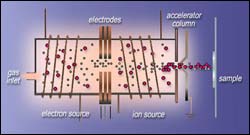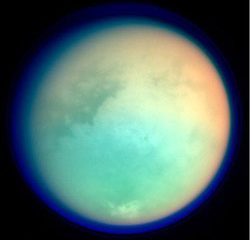Physics and Astronomy
This area deals with the fundamental laws and building blocks of nature and how they interact, the properties and the behavior of matter, and research into space and time and their structures.
innovations-report provides in-depth reports and articles on subjects such as astrophysics, laser technologies, nuclear, quantum, particle and solid-state physics, nanotechnologies, planetary research and findings (Mars, Venus) and developments related to the Hubble Telescope.

Summing Up the Unique Venus Transit 2004 (VT-2004) Programme
Vast Public Education Project is an Outstanding Success
On June 8, 2004, Venus – the Earth’s sister planet – passed in front of the Sun. This rare event – the last one occurred in 1882 – attracted the attention of millions of people all over the world.
In a few days’ time, on November 5-7, 2004, about 150 educators, media representatives, as well as amateur and professional astronomers will gather in Paris (France) at the international conference “The Venus Transit Ex

Carving New Frontiers for Ion-Beam Technology
An Imprinter that Combines Electron and Ion Beams Opens the Way for Wider Applications
An ion-beam system that simultaneously combines focused beams of electrons and positive ions promises to improve the versatility, efficiency, and economy of this important technology. The new system was developed by researchers at the Department of Energy’s Lawrence Berkeley National Laboratory, who report its principles and applications in the November 8, 2004 issue of Applied Physics Letter

Researchers describe how natural nuclear reactor worked
To operate a nuclear power plant like Three Mile Island, hundreds of highly trained employees must work in concert to generate power from safe fission, all the while containing dangerous nuclear wastes.
On the other hand, it’s been known for 30 years that Mother Nature once did nuclear chain reactions by her lonesome. Now, Researchers at Washington University in St. Louis have analyzed the isotopic structure of noble gases produced in fission in a sample from the only known nat

Sound Filters Light
Russian researchers have developed a small, smart and tolerant to vibrations spectrometer, which is equally reliable in the outer space and in oceanic depths. The development was performed with financial support from the Russian Foundation for Basic Research (RFBR) and the Foundation for Assistance to Small Innovative Enterprises (FASIE). The unique device is based on a completely new principle: the light goes through an acoustooptical filter in the device.
Specialists of the Sci

Titan, close and in false colour
This image shows Titan in ultraviolet and infrared wavelengths, taken by the NASA/ESA/ASI Cassini-Huygens spacecraft on 26 October 2004, during the close fly-by.
This image is constructed from four images acquired through different colour filters. Red and green colours represent infrared wavelengths and show areas where atmospheric methane absorbs light.
These colours reveal a brighter (redder) northern hemisphere. Blue represents ultraviolet wavelengths and shows the high

Researchers detect methane on Mars
A University of Michigan scientist is part of a European Space Agency team that has detected methane gas on Mars, the clearest indicator yet that there could be life there, said Sushil Atreya, professor and director of the Planetary Science Laboratory in the College of Engineering.
“Biologically produced methane is one of many possibilities,” Atreya said. “Methane is a potential biomarker, if a planet has methane we begin to think of the possibility of life on the planet. On Earth